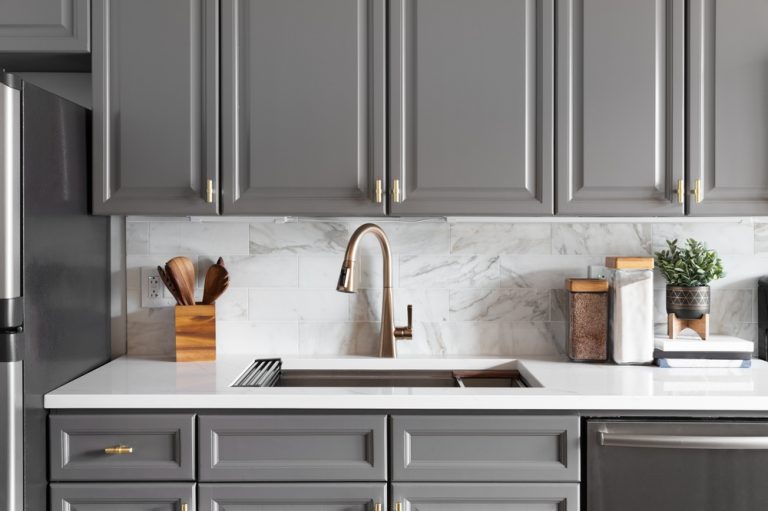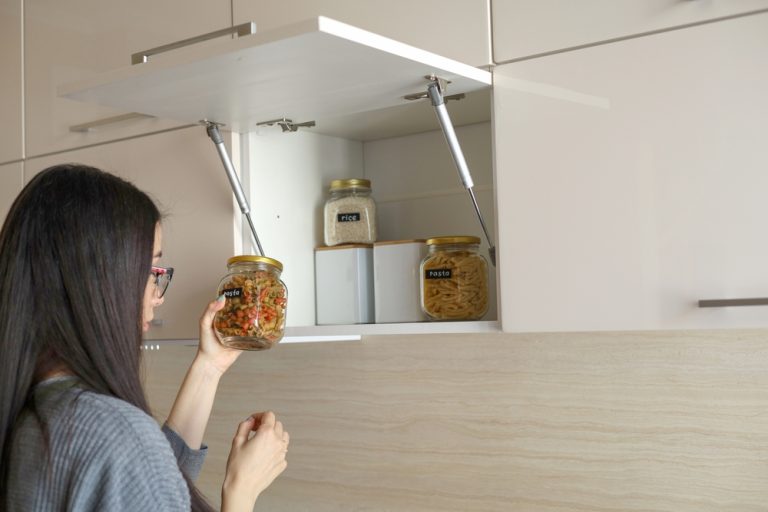Do You Paint Both Sides of Kitchen Cabinet Doors?

When it comes to painting kitchen cabinets, one of the most common questions homeowners have is: Do you paint both sides of kitchen cabinet doors? While painting the front of the cabinet doors is a given, many people wonder if it’s necessary to paint the back as well. The decision to paint both sides can affect the overall look, durability, and even the time and effort required for the project. In this blog, we’ll explore the factors to consider when deciding whether or not to paint both sides of your kitchen cabinet doors, and provide some tips for achieving the best results.
Why Consider Painting Both Sides of Kitchen Cabinet Doors?
Before deciding whether to paint both sides of your kitchen cabinet doors, it’s important to understand the potential benefits and drawbacks. Painting both sides can have a significant impact on the final appearance and functionality of your cabinets.
Aesthetic Consistency
- Uniform Appearance: Painting both sides of the cabinet doors ensures a uniform appearance, especially when the doors are open. This can be important if the inside of your cabinets is visible, as it maintains a consistent look throughout the kitchen.
- Matching Finishes: If you’re using a specific paint color or finish, painting both sides of the doors helps ensure that the entire cabinet matches, creating a seamless and polished look.
Durability and Protection
- Prevent Warping: Painting both sides of the doors can help prevent warping by balancing the moisture levels on both sides of the wood. This is particularly important in kitchens where humidity levels can fluctuate.
- Increased Longevity: A coat of paint on both sides provides extra protection against wear and tear, grease, and moisture, helping to extend the life of your cabinet doors.
Personal Preference
- Tailoring to Your Needs: Some homeowners simply prefer the look of painted interiors, while others may prioritize the exterior appearance. Your decision may depend on how you use your cabinets and what aesthetic you’re aiming for.
Also Read – What Type of Screws to Hang Kitchen Cabinets?
When You Might Choose Not to Paint Both Sides
While painting both sides of kitchen cabinet doors has its benefits, there are also valid reasons why you might opt to paint only the front.
Time and Effort
- Labor-Intensive: Painting both sides of the doors doubles the work involved. It requires more time, more paint, and careful drying to avoid smudges or drips. If you’re looking to complete the project quickly, focusing on the exterior might be more practical.
- Drying Time: Painting both sides means you’ll need to wait for one side to dry completely before flipping the door over to paint the other side. This can extend the duration of your project.
Budget Considerations
- Cost of Materials: Painting both sides of the doors will require more paint, primer, and possibly additional tools, which can increase the overall cost of the project.
- Limited Visibility: If the inside of your cabinets is rarely seen, you might decide that painting the interior isn’t necessary, allowing you to save on materials and time.
Existing Cabinet Condition
- Previously Finished Interiors: If the interiors of your cabinet doors are already finished with a material that doesn’t require painting, such as a laminate or wood veneer, you may choose to leave them as-is.
- Cabinet Design: Some cabinets are designed with contrasting interiors, where the inside of the doors is intentionally left unpainted or finished differently to create a specific look.
How to Decide Whether to Paint Both Sides?
Deciding whether to paint both sides of kitchen cabinet doors depends on several factors, including your goals for the project, the current state of your cabinets, and your personal preferences.
Consider Your Kitchen’s Design
- Open Shelving or Glass Doors: If your kitchen features open shelving or glass cabinet doors, painting both sides of the doors might be essential for maintaining a cohesive appearance.
- Traditional vs. Modern Design: In a traditional kitchen, where closed cabinetry is more common, painting just the exterior may suffice. However, in a modern kitchen with a minimalist design, painting both sides could contribute to a sleek, uniform look.
Evaluate the Condition of the Doors
- Existing Finish: Assess the current finish on both sides of the doors. If the interior side is already in good condition, you may choose to leave it untouched. If it’s worn or outdated, painting both sides might be worthwhile.
- Material Type: The type of material your cabinet doors are made from can also influence your decision. Solid wood doors may benefit more from painting both sides compared to laminate or MDF doors, which might not require as much protection.
Weigh the Pros and Cons
- Functionality vs. Aesthetics: Consider whether the additional time and effort required to paint both sides will provide enough aesthetic or functional benefits to justify the extra work.
- Long-Term Goals: Think about your long-term goals for the kitchen. If you’re planning a complete kitchen remodel in the future, you might opt for a quicker solution now. However, if this is a long-term upgrade, investing the time to paint both sides might be more rewarding.
Tips for Painting Kitchen Cabinet Doors
Whether you decide to paint both sides or just the exterior, there are some best practices you should follow to ensure a smooth, durable finish.
Prepare the Surface Properly
- Clean Thoroughly: Before painting, clean the cabinet doors thoroughly to remove grease, dirt, and dust. This will help the paint adhere better and result in a smoother finish.
- Sand the Surface: Lightly sand the doors to create a rough surface for the paint to grip. This is especially important if the doors have a glossy or varnished finish.
Use High-Quality Paint and Tools
- Choose the Right Paint: Select a high-quality paint that is durable and easy to clean, such as a semi-gloss or satin finish. These types of paint are ideal for kitchen cabinets as they withstand wear and tear.
- Invest in Good Brushes and Rollers: Using high-quality brushes and rollers will help you achieve a smooth, even coat without brush marks or streaks.
Apply Multiple Coats
- Prime First: Start with a primer to ensure that the paint adheres well and to cover any existing stains or dark colors. Allow the primer to dry completely before applying the paint.
- Apply Thin Coats: Apply the paint in thin, even coats, allowing each coat to dry fully before applying the next. This will help prevent drips and ensure a durable finish.
Allow for Adequate Drying Time
- Dry Between Coats: Make sure each coat of paint is completely dry before applying the next one. This is particularly important if you’re painting both sides of the doors, as flipping them too soon can cause smudges or damage the finish.
- Final Cure Time: After the final coat, allow the paint to cure for several days before reattaching the doors and using the cabinets. This ensures the paint hardens fully and resists scratches and chips.
Conclusion
So, do you paint both sides of kitchen cabinet doors? The answer depends on your specific needs, preferences, and the condition of your cabinets. Painting both sides can provide a consistent look, prevent warping, and offer additional protection, but it also requires more time, effort, and materials.
By carefully considering the pros and cons, evaluating your kitchen’s design, and following best practices for painting, you can make an informed decision that enhances the beauty and functionality of your kitchen cabinets.






